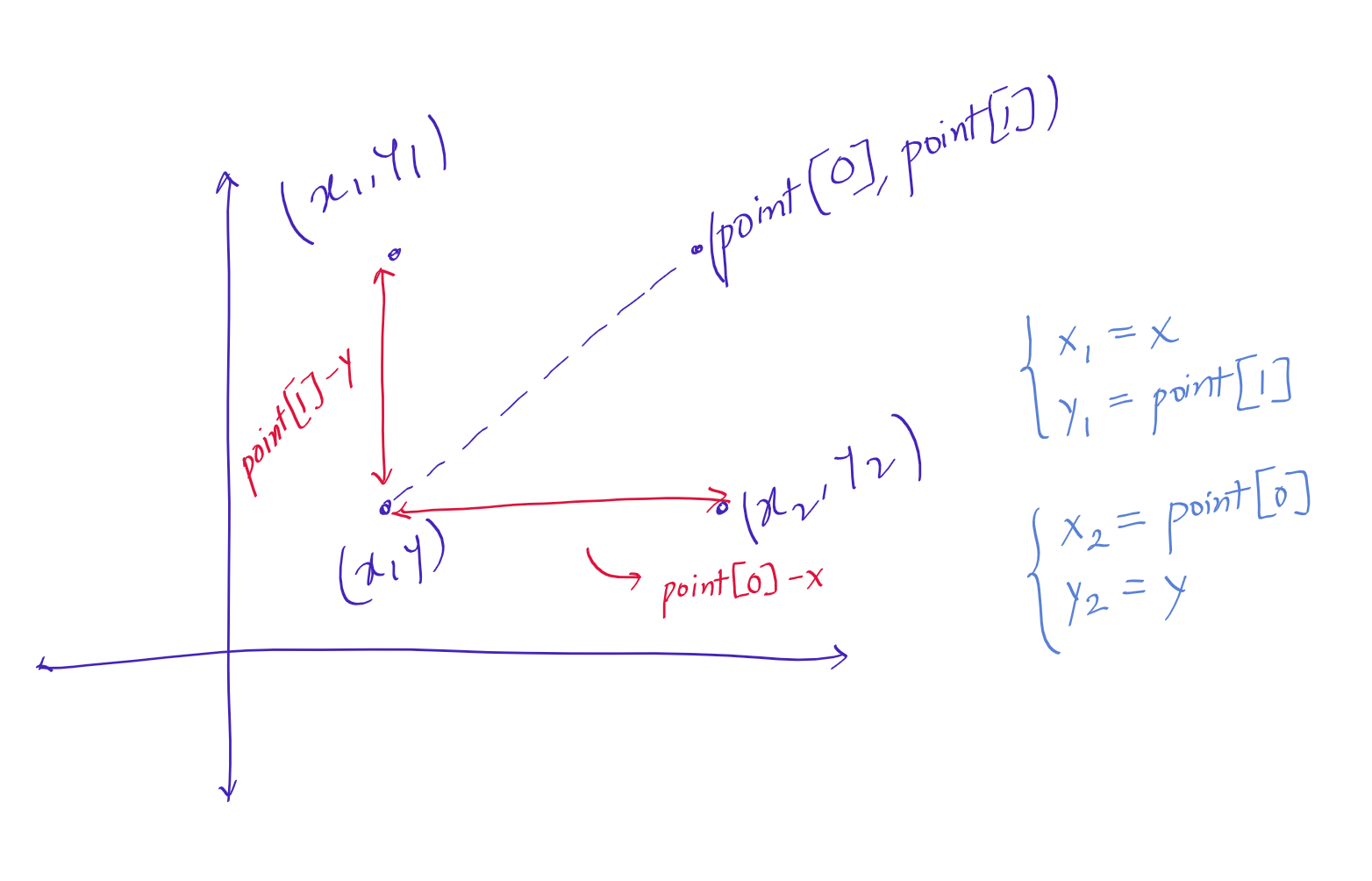This question is part of NeetCode150 series.
Problem Description
You are given a stream of points on the X-Y plane. Design an algorithm that:
- Adds new points from the stream into a data structure. Duplicate points are allowed and should be treated as different points.
- Given a query point, counts the number of ways to choose three points from the data structure such that the three points and the query point form an axis-aligned square with positive area.
An axis-aligned square is a square whose edges are all the same length and are either parallel or perpendicular to the x-axis and y-axis.
Implement the DetectSquares class:
- DetectSquares() Initializes the object with an empty data structure.
- void add(int[] point) Adds a new point point = [x, y] to the data structure.
- int count(int[] point) Counts the number of ways to form axis-aligned squares with point point = [x, y] as described above.
Solution

We can use HashMap to store the points as Strings and their count as duplicates are allowed. So count the number of squares we can do the following:
- Loop through each point while considering it as a diagonal
- If it’s parallel to the input point’s x or y, it cannot be a diagonal, so we can continue to check for other points. Also, the length of the sides which will be formed by using the input point and diagonal points must be same since it needs to be a square.
- If it’s a possible diagonal, we can determine the co-ordinates of other two points
- We add another check for a square if the length between the diagnonal and the other two points is the same. In that case, increase the count
- The count will depend on duplicates also. The final count to be added will be: frequency of point 1 + frequency of point 2 + frequency of current diagonal point
1
2
3
4
5
6
7
8
9
10
11
12
13
14
15
16
17
18
19
20
21
22
23
24
25
26
27
28
29
30
31
32
33
34
35
36
37
38
39
40
41
42
43
44
45
46
47
48
49
50
51
52
53
54
55
56
57
58
59
60
61
62
63
class DetectSquares {
//store [x,y] points in HashMap and their count as value since duplicates are allowed
HashMap<String, Integer> map;
public DetectSquares() {
map = new HashMap<>();
}
//add point [x,y] to the HashMap
public void add(int[] point) {
String s = point[0] + ":" + point[1];
map.put(s, map.getOrDefault(s, 0) + 1);
}
//get the count of squares which can be made for the given input point with 3 other points in the HashMap
public int count(int[] point) {
//init
int count = 0;
//loop through each point in the HashMap and check if it can be treated as a diagonal for the input point
for(String k: map.keySet()){
int x = Integer.parseInt(k.split(":")[0]);
int y = Integer.parseInt(k.split(":")[1]);
//if the current co-ordinate's x or y is same as input point, it cannot be a diagnonal so we can continue
//the length of the sides parallel to x and y should be same in order to form a square as well
if( (x == point[0] || y == point[1]) || (Math.abs(point[0]-x) != Math.abs(point[1]-y) ))
continue;
//if [x,y] can be a diagnonal for the input point, we can determine the co-ordinates of other two points
//but at this point, it can be a rectangle also. We will add a check for square also.
//First Point: [x1, y1] = [p[0], y]
//Second Point: [x2, y2] = [x, p[1]]
int x1 = point[0];
int y1 = y;
int x2 = x;
int y2 = point[1];
//if the above two points are present in the HashMap, then we can form a square
if(map.containsKey((x1 + ":" + y1)) && map.containsKey((x2 +":" +y2))){
//since duplicates are allowed, the number of ways we can form that square is:
//count += frequency of point 1 + frequency of point 2 + frequency of current diagonal point
count +=( map.get(x1 + ":" + y1) * map.get(x2 +":" +y2) * map.get(k));
}
}
return count;
}
}
/**
* Your DetectSquares object will be instantiated and called as such:
* DetectSquares obj = new DetectSquares();
* obj.add(point);
* int param_2 = obj.count(point);
*/
